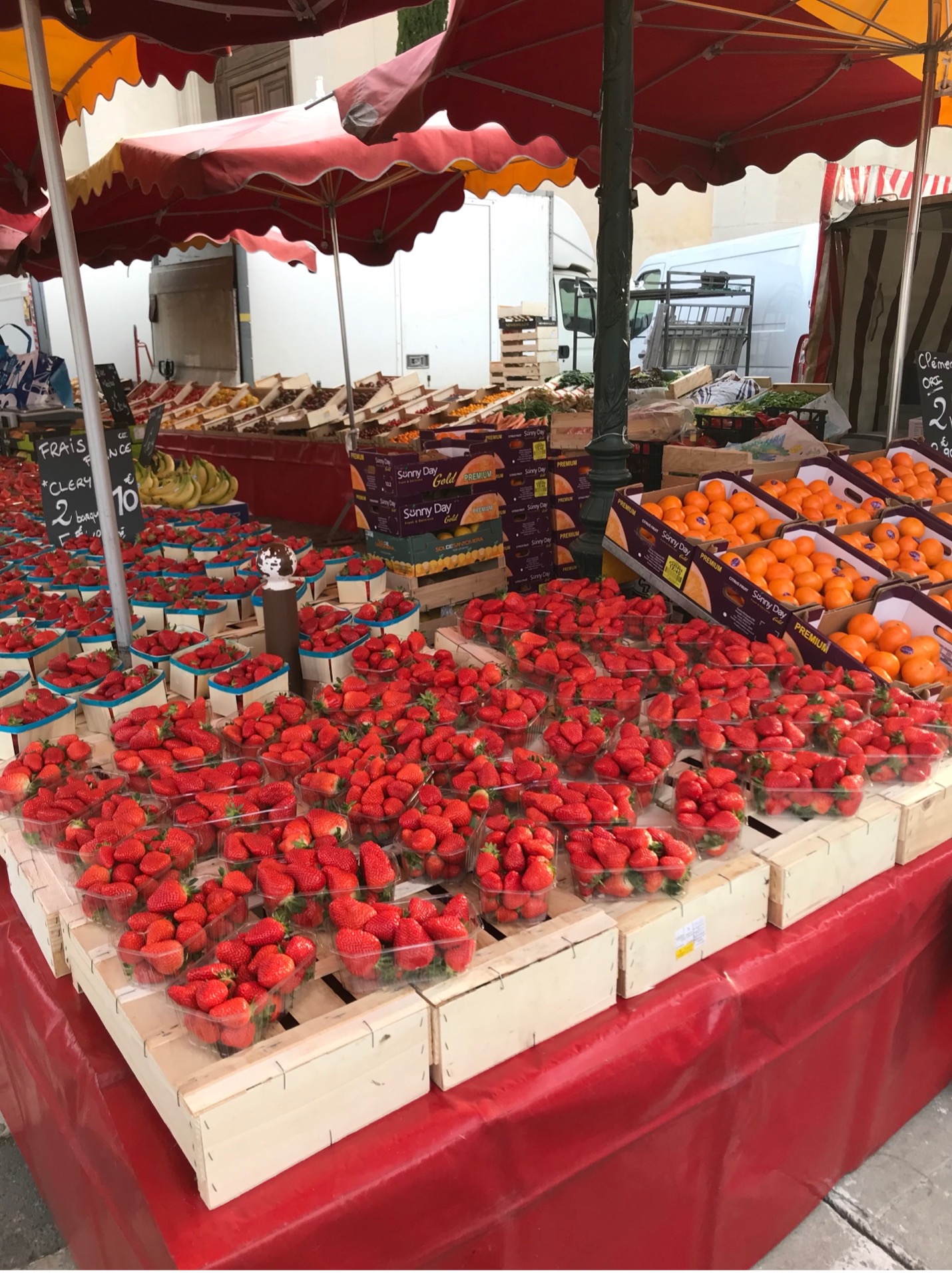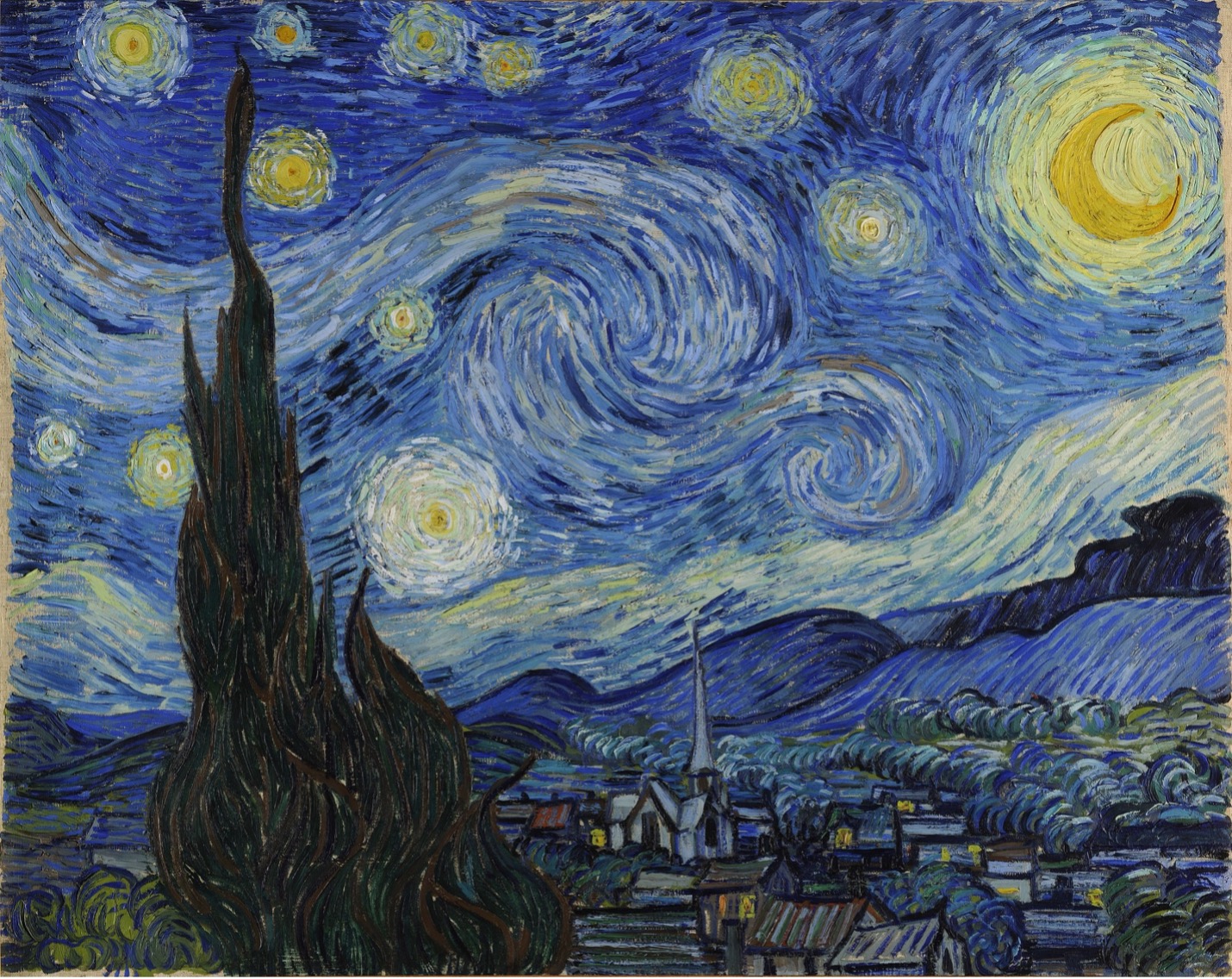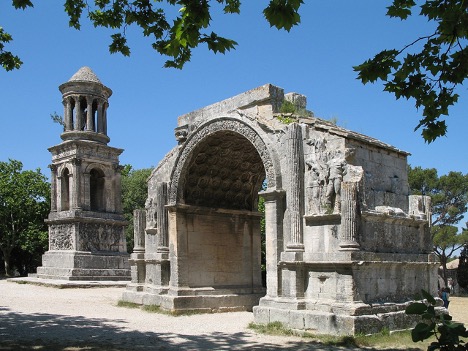Secrets of St-Rémy #1: The must-see sights
My wife, Val, and I live part of the year in St-Rèmy-de-Provence, a charming town between Marseille and Avignon. I think the best part of St-Rémy is just wandering its winding streets, but there are three sights I recommend that every visitor see—the outdoor market, the asylum where Vincent van Gogh was treated combined with the van Gogh walk, and the Roman sites of Glanum and les Antiques.
I’ve written a guidebook about the area, An Insider’s Guide to Provence, where I share some of our favorite things to see and do around our home in France.
This ‘Secrets of St-Rémy’ mini-series of articles is based on that book.
1. The best outdoor market in St-Rémy
One of the glories of Provence is its outdoor markets, full of wonderful sights, smells, and tastes. You can’t visit Provence without going to its markets, and I think the best one is St-Rémy’s. It starts early on Wednesday morning and finishes around noon, and you should go early because it can get crowded.
The market is spread all over town and has three main sections—in front of the church, in the main square, and in the parking lot across from the church.
I suggest starting in front of the church because it’s easy to find.
If you get there early, you’ll see the paëlla man stirring his steaming goodies in a big round pan nearly three feet across.

Nearby is a boulangerie and a place to get newspapers, plus a stand that specializes in fruits. I love seeing how the fruit changes with the seasons, starting with strawberries in the spring, then later cherries, and in the summer it’s stone fruits and melons.

If you feel like having a coffee and a croissant to start your day, one of my favorite spots, is the Grand Café Riche near the church. It’s got an ‘old-timey’ look, like something out of Paris in the 1800s.
When you are ready to move on, Rue Lafayette will take you to the center of town and the heart of the market. Along the way, you’ll pass a vendor selling honey and another selling jam—I like to take little jars of honey home as gifts. There’s usually someone selling sachets of lavender, another nice gift.
Rue Lafayette ends at the town’s main square, Place Jules Pelissier in front of the mayor’s office.
St-Rémy: favourite vendors
My favorite olive vendor is there, with more than a dozen kinds of olives. He also has spreads like tapenade (made from olives and anchovies), pistounade (olives and basil), and caviar d’aubergine (eggplant)—tasty things to put on bread or crackers at aperitif time. Try some!
Pick out what you want and the vendor will fill up a container until you tell him to stop.

Nearby is a big rotisserie with chickens turning on the spit.
If you don’t see it, just follow your nose.
There’s nothing better than a hot and juicy roast chicken, especially a French one.
The cheese lady is near the chicken man, with lots and lots of cheeses. Sample a few! Charles de Gaulle once complained about the fractious French by asking, “How do you govern a country with 246 kinds of cheese?”
Now back to the church
Head back to the church and look across the street to find the third main section of the market, held in the town’s central parking lot.
– There’s a carousel in one corner, which is great for young kids.
– This part of the market has clothing, colorful tablecloths, kitchenware, lavender, and more.
– There’s also a small brocante (flea market) with fun items from the old days—you can wander through it to find a memento to take home.
Later in the morning, a small musical group sets up at the intersection in front of the church. Grab a seat at any of the cafés lining the road to enjoy the music.
If you’d like to have lunch after your visit to the market, be sure to make a reservation or arrive early because they fill up fast on market days.
2. St-Rémy: On the Trail of Vincent van Gogh

Vincent van Gogh spent several years in Provence, first in Arles and then—
after that unfortunate business with his ear
—in a mental asylum in St-Rémy called Saint-Paul de Mausole.
A former Franciscan monastery, Saint-Paul de Mausole provided a peaceful setting for van Gogh to calm his troubled mind. He spent a year there, producing over 100 paintings, including masterpieces like The Starry Night and Irises.

Van Gogh had a small room on the second floor of the asylum and it is still kept the same way it was when he lived there.
I like to look out his window and wonder: What was he thinking?
The grounds of Saint-Paul de Mausole are beautiful, especially the garden, and you should take a few minutes to look around.
– You’ll find reproductions of some of van Gogh’s paintings, placed in the same spots where he painted them.
– You can compare what things really look like with how he painted them, and they are often very different.
To see reproductions of other van Gogh paintings, some in the spots where he painted them, there’s an excellent self-guided walk in St-Rémy, with an inexpensive audio guide—ask at the tourist office for information.
3. In St-Rémy discover impressive Roman Sites

Just a short walk from Saint-Paul de Mausole are two impressive Roman sites, Glanumand les Antiques.
Glanum was originally a Celtic settlement, at the foot of the Alpilles mountains and near a sacred spring. After the Roman conquest, it became an important cultural center, with grand temples and public baths, and a central forum. The city was eventually abandoned and fell into disrepair, and some of its stones were hauled away and used for construction in St-Rémy.
Glanum was much smaller than other nearby Roman cities like Arles and Nîmes, so if you want a taste of Roman history but don’t want to spend a lot of time, this is a good choice. The site is well-marked and there is a nice museum next to it, so it’s also good for those with a deeper interest. If you go, be sure to climb up to the highest point for panoramic views over St-Rémy and the Rhône Valley.
Next to Glanum are two large Roman monuments called les Antiques.
– One is a mausoleum and the
– other is the oldest triumphal arch in France, kind of like the Arc de Triomphe in Paris but smaller.
It only takes a few minutes to walk around and enjoy what’s carved on them (see if you can find the character that looks like a space alien.)
Many people love Provence and many adore St-Rémy from the moment they discover it.
Have you been to St Rémy? What were your experiences? Do you have any stories? Please share in the comments below.
Image credits:
1. – 3. Market photos: copyright Keith Van Sickle
4. & 5. Van Gogh paintings: public domain
6. Les Antiques: Creative Common license, attribution Marc Ryckaert
Secrets of St-Rémy
is a series perfect for your next trip—save it now.
It will take you to the all of best sights, sounds, and aromas of St Rémy
1. Must-see sights
2. Favorite places to eat
3. Favorite Wineries
4. Favorite Boutiques







the book is great and because i have been there, i concur with what Keith is saying.
although St. Remy is a small community, one needs a lot of time to explore and appreciate the place.
what i (a French born) find amusing is that it took an American citizen to write about that special place in Provence.
thank you, Keith.